Operation Husky – Introducing the Players
In the last post I explained why Alison and I would forsake what is often the nicest time of year in Nova Scotia to join thirty three other Canadians on a journey to retrace the steps of the Canadian army in Italy during WWII. In the next three posts I will describe the Canadian campaign in Sicily, code named Operation Husky, as we discover it with Liberation Tours.
In preparation for the Sicily portion of the trip Alison and I have both listened to Mark Zuehlke’s excellent history of the campaign, aptly named Operation Husky. You can buy this and most of Mark’s other books on the Italian campaign, as an audible book from Audible.com.
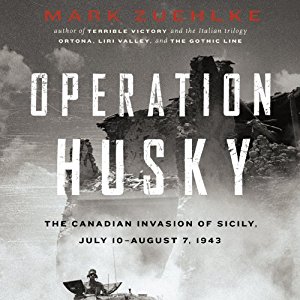
The great thing is that Mark is actually along with us on this trip so we will be getting our information as they say, from the horse’s mouth. I can’t wait.
After a few days in Rome where the group gets accustomed to the time change we grab an Alitalia flight to Catania, the second city of Sicily, located on the island’s eastern coast. Our base for the time in Sicily will be the Four Points Sheraton Catania which is a nice American style hotel some six kms. north of the city centre. A few years ago Alison and I stayed in the same area on a week long tour of Sicily. In mythology, the area is known as the Cyclopean coast and is where Odysseus allegedly encountered the cyclops Polyphemus on his journey home from Troy. I doubt we’ll see any cyclops on this trip.
One thing I should make clear at the outset about Liberation Tour 2016. It is not a sightseeing trip to Italy, it’s a military history tour with a very specific focus – the Canadian role in the liberation of Italy from German forces. Italy is the most visited country in the world by foreign tourists and for good reason, however, on this trip we will be off the beaten path and I don’t expect we’ll run into too many other visitors, at least not at the war related sites.
Operation Husky – The Background
It goes without saying that you need to understand the reasons why Sicily was chosen for the site of an Allied invasion in 1943, rather than other possible targets like Sardinia and Greece, in order to understand why the campaign unfolded the way it did. On the bus on the way to our first war related stop at Bark West Beach, Mark, our historian and Phil Craig, our historical interpreter, went into great detail about the background to Operation Husky. You can read your own detailed account at the Canadian Soldiers website. Here’s my own Cole’s Notes version.
By the spring of 1943 the Allies had pretty well driven the Axis powers out of North Africa and had a springboard from which they could strike at a number of Mediterranean targets. Preparations for the invasion of France from Britain were underway, but realistically it was not going to happen until 1944 at the earliest. Churchill was eager to invade Italy, believing that it was a soft target and could lead to Allied troops coming into Austria and Germany through the back door as it were. Stalin was always urging the western powers to open up a second European front to take pressure off his forces that, while just victorious at Stalingrad, had absorbed losses that were unimaginable in the west. The Americans, finally up to fighting strength and now present in Europe in large numbers, were also onside. So the decision was made to launch an invasion of Europe through Sicily – Operation Husky.
Operation Husky – The Canadian Role
The only significant combat that Canadians had seen in Europe since arriving in droves from 1940 onward, was the disastrous Dieppe raid on August 19, 1942. You can read my take on that debacle in these two posts here and here. Not surprisingly politicians in Canada were anxious to see the army get a second chance, so when Prime Minister MacKenzie King learned that there was to be an invasion of Italy, he personally asked Winston Churchill to let us play a role. This request flew in the face of the head of Canadian forces in Europe, General A.G.L McNaughton’s desire to see a unified Canadian army prepare for the landings in France and fight as one army. He was overruled and eventually ended up resigning, although he did get to be Canada’s Defence Minister for the last two years of the war, not a bad gig.
Operation Husky was to be a joint U.S.-British campaign. The American 7th Army was commanded by none other than General George S. Patton (actually Lieutenant-General, but that doesn’t have quite the ring). The British 8th Army was commanded by an equally prominent general, Bernard Montgomery, the victor at El Alamein. Both had egos the size of Rhode Island and that was to have significant consequences to the Canadians. While they went for glory, i.e. press adulation over conquest of easy and often non-strategic targets, the Canadians were stuck with the dirty work of actually overcoming fierce resistance. Obviously, that’s a simplification; both the Yanks and the Brits did lots of serious fighting, but man for man I’ll stick by the statement that Canadians faced and overcame the toughest opponents.
Once it was agreed that Canada would provide both an infantry division and a tank brigade to be part of the British 8th Army, the serious planning began. The infantry division consisted of three brigades of three regiments each. I’m going to identify each one in turn, because, believe me, these guys will become like family as we follow each regiment from the beaches of Sicily to the canals of the Veneto.
These are the components of the infantry division.
Operation Husky – 1st Infantry Brigade – The Royal Canadian Regiment
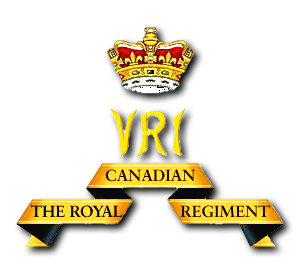
The Royal Canadian Regiment or RCR’s is one of the oldest in the Canadian Armed Forces and dates back as far as 1883. They served under General Middleton in defeating the Métis and aboriginal forces during the North-West Rebellion. Please read my account of the Battle of Batoche in which they fought and won the last major battle on Canadian soil. They also served in the Boer War and were part of the Ypres and Somme battles in WWI. Some might consider the RCRs the granddaddy of Canadian regiments and that would be hard to argue with. As far as I can tell, the RCRs don’t have a particular geographic affiliation, although at one point they were charged with the defence of Halifax.
1st Infantry Brigade – The Hastings and Prince Edward Regiment
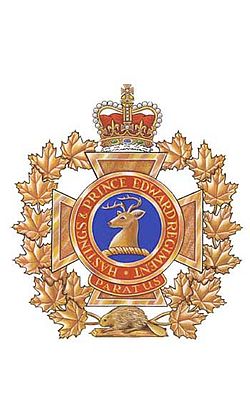
The Hastings and Prince Edward Regiment or the Hasty P’s as they are usually called, date all the way back to a voluntary militia raised in Belleville, Ontario to assist in quelling Fenian raids. They have antecedents as far back as the War of 1812 in separate Hastings and Prince Edward County militias. The members of the Hasty P’s who fought in Italy almost all came from these two counties in north east Ontario. Like most of the Canadian regiments in Italy, these were guys who had common backgrounds, knew and respected each other and were voluntarily serving their country in a cause they believed in. As we shall see down the road, this had a direct correlation with the success or failure that each regiment might encounter.
The Hasty P’s are the most famous regiment to serve in Italy because of one man who served with them – Farley Mowat. Mowat wrote two books about his war time experiences in Italy – The Regiment and And No Birds Sang.
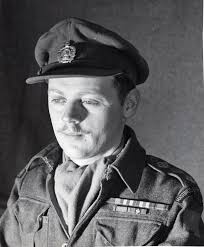
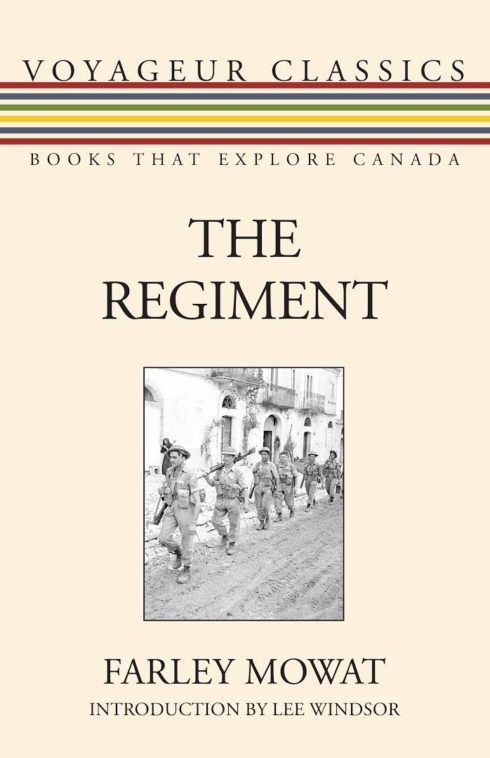
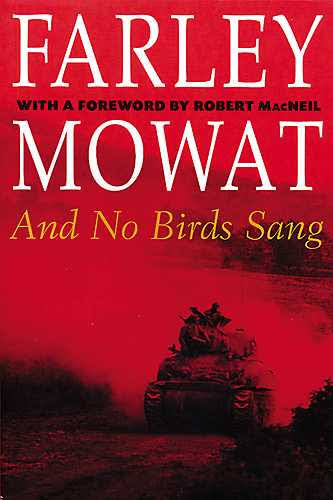
Mowat’s books have forever ensconced the role of the Hasty P’s in the liberation of Italy, perhaps unjustly to the exclusion of other Canadian regiments, but the reality is that Mowat could only write about his own experiences, and those were with the Hasty Ps. Readings from both of his books will play a prominent role on this journey. We have a number of people on the tour whose fathers or other relatives fought with the Hasty Ps.
1st Canadian Infantry Brigade – 48th Highlanders of Canada
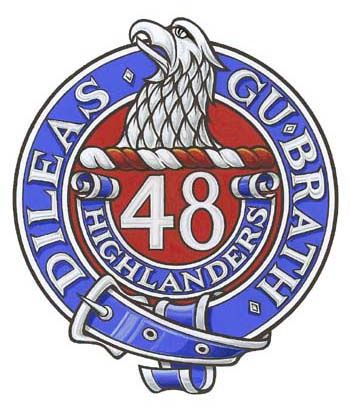
The 48th Highlanders were formed in 1891 as a reserve militia unit in Toronto and are indelibly linked with that city. Their members have served on both world wars and have been active in almost every Canadian deployment since WWII. They provide a nice contrast with the Hasty Ps – city boys vs. country boys, both trying to prove that they were the better soldiers. It was a friendly rivalry that no doubt brought out the best in each group.
Operation Husky – 2nd Infantry Brigade – Princess Patricia’s Canadian Light Infantry
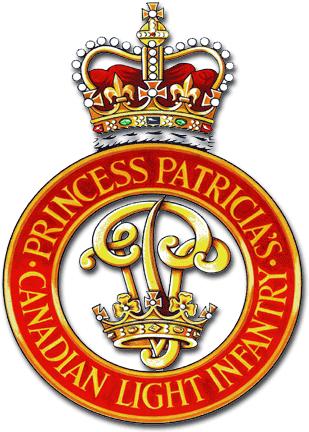
The Princess Patricia’s Canadian Light Infantry, aka the Princess Pat’s, The Patricias or the PPCLI, is one of the newer regiments. Dating only from the start of WWI, the PPCLI was the first regiment to participate in that war. Part of the permanent Canadian army, members of this regiment were recruited primarily in western Canada from offices in Vancouver and Winnipeg. Despite the designation as a light infantry unit, the PPCLI has always been primarily mechanized.
2nd Canadian Infantry Brigade – The Seaforth Highlanders of Canada
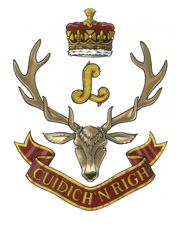
The Seaforth Highlanders of Canada, The Seaforths, also date from WWI as a reserve unit based in Vancouver. They were up to full regimental strength within one week of recruiting during WWII and among the first to deploy to Europe.
2nd Canadian Infantry – The Loyal Edmonton Regiment
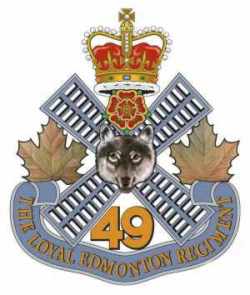
The Loyal Edmonton Regiment, the Loyal Eddies, started out WWII as just the Edmonton Regiment and earned the designation Loyal in 1943. Like the 48th and the Seaforths, the Eddies were an urban based reserve unit, obviously of mostly Edmontonians.
Operation Husky – 3rd Canadian Infantry Brigade – Royal 22 Regiment
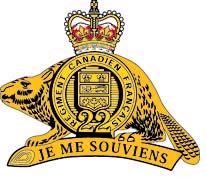
The Royal 22 Regiment, much better known as the Van Doos, a corruption of vingt-deux, was a Canadian army regiment that was almost entirely composed of French speaking Quebecois. Although it can retrace its roots as far back as the War of 1812, the all French version dates from WWI, where the regiment served with distinction and earned two VCs. In 1921 the word Royal was added to the regimental name, a somewhat ironic touch given the current view of the monarchy by most Quebecois. Note the regimental slogan Je Me Souviens (I remember) which was later borrowed by a separatist government to add to Quebec license plates for the last three decades – more irony.
3rd Canadian Infantry Brigade – Carleton and York Regiment

The Carleton and York Regiment was a cobbled together unit of the existing Carleton Light Infantry and York Regiment. It appears to have existed only for a brief time before the start of WWII and after the war combined with other New Brunswick regiment to create the Royal New Brunswick Regiment which is active today. I cannot find a regimental badge. The regiment was made up of volunteers from heavily rural Carleton and York counties in New Brunswick, most of whom would have been lumbermen or farmers. This was the unit Alison’s father joined, or at least we believe so. It is also of interest to Bob and Jean Zinck and Dave and Patsy Allison who are on this trip from New Brunswick and intend to honour as many C&Y graves as possible.
3rd Canadian Infantry Brigade – The West Nova Scotia Regiment
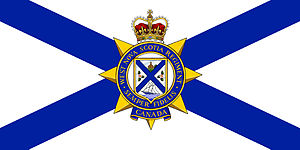
The West Nova Scotia Regiment or West Novas, holds great interest for me as it was composed of young men from the Annapolis Valley which is where both my parents originate, and from the South Shore. It has antecedents as far back as the War of 1812, but came to be the West Novas with the amalgamation of the Annapolis and Lunenburg Regiments shortly before WWII. Most of the volunteers would have had farming or fishing backgrounds.
These are the components of the tank brigade.
Operation Husky – 1st Canadian Tank Brigade – The Ontario Regiment (Tank)
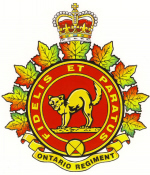
The Ontario Regiment, the Ontarios, existed long before tanks were invented, but became a tank regiment in 1936. They were the first unit to receive Churchill tanks upon which they trained in England before deployment to Sicily. As far as I can tell they were not associated with any particular area of Ontario, but had enlistments from throughout the province.
1st Canadian Tank Brigade – The Three Rivers Regiment (Tank)
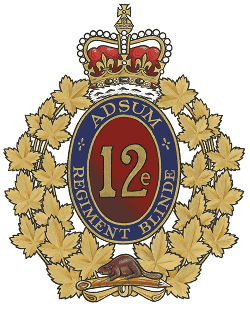
The Three Rivers Regiment (Tank) was, at the time of WWII, an almost exclusively Anglophone regiment from Quebec. At that the time the city of Trois Rivieres was still called by its English translation, Three Rivers. The regimental badge shown is the one in use today as part of the 12th Régiment blindé du Canada.
1st Canadian Tank Brigade – The Calgary Regiment (Tank)
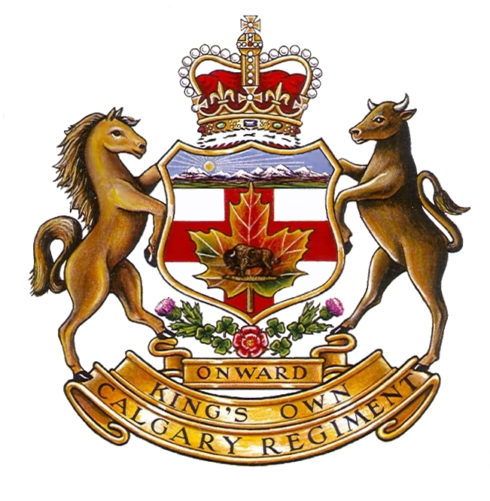
The Calgary Regiment (Tank) started out as an infantry regiment, but was designated an armoured unit in 1936. Its members came primarily from the towns of Olds, Stettler and Red Deer as well as Calgary.
So these were the primary fighting units, but they were not the only Canadian units involved in Operation Husky. Other participants included the Royal Canadian Artillery, Saskatoon Light Infantry, 4th Princess Louise Dragoon Guards and the Royal Canadian Engineers. All played vital roles in supporting the infantry and tank forces. In addition there were dozens of Allied air force squadrons based in Malta, Gibraltar and North Africa that provided air support.
Operation Husky – The Enemy
So who was actually defending the island of Sicily on July 9/10 when our forces came ashore? By far the largest number of troops, not surprisingly, were Italians. Remember, Italy was part of the Axis and this would be the first invasion of the Axis homeland anywhere. General Alfredo Guzzoni commanded the 200,000 strong Italian 6th army. He’d had a pretty good record up to then, including leading the successful invasion of Albania and the Italian assault on France. Backing him up were 32,000 German troops in the Panzer Division Hermann Göring and the 15th Panzergrenadier Division. Between them they had about 150 tanks and they were pretty well all veteran fighters, which the Canadians were not. There were also 30,000 Luftwaffe support staff.
OK, I’ve introduced the cast and in the next post I’ll open the curtain on Operation Husky. Hope you’ll be there to follow it as the Canadian boys come ashore in Sicily. Viva Italia!

